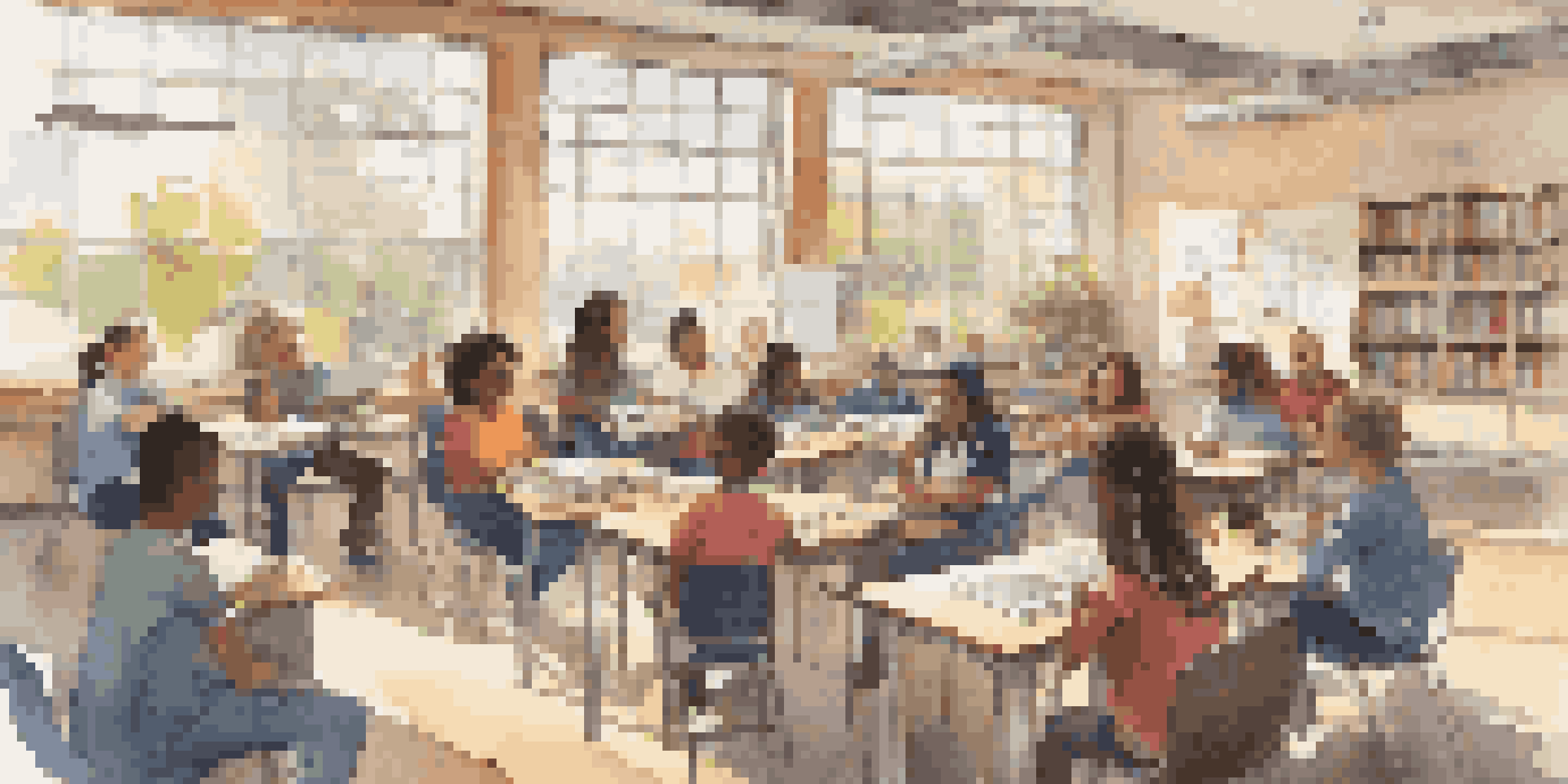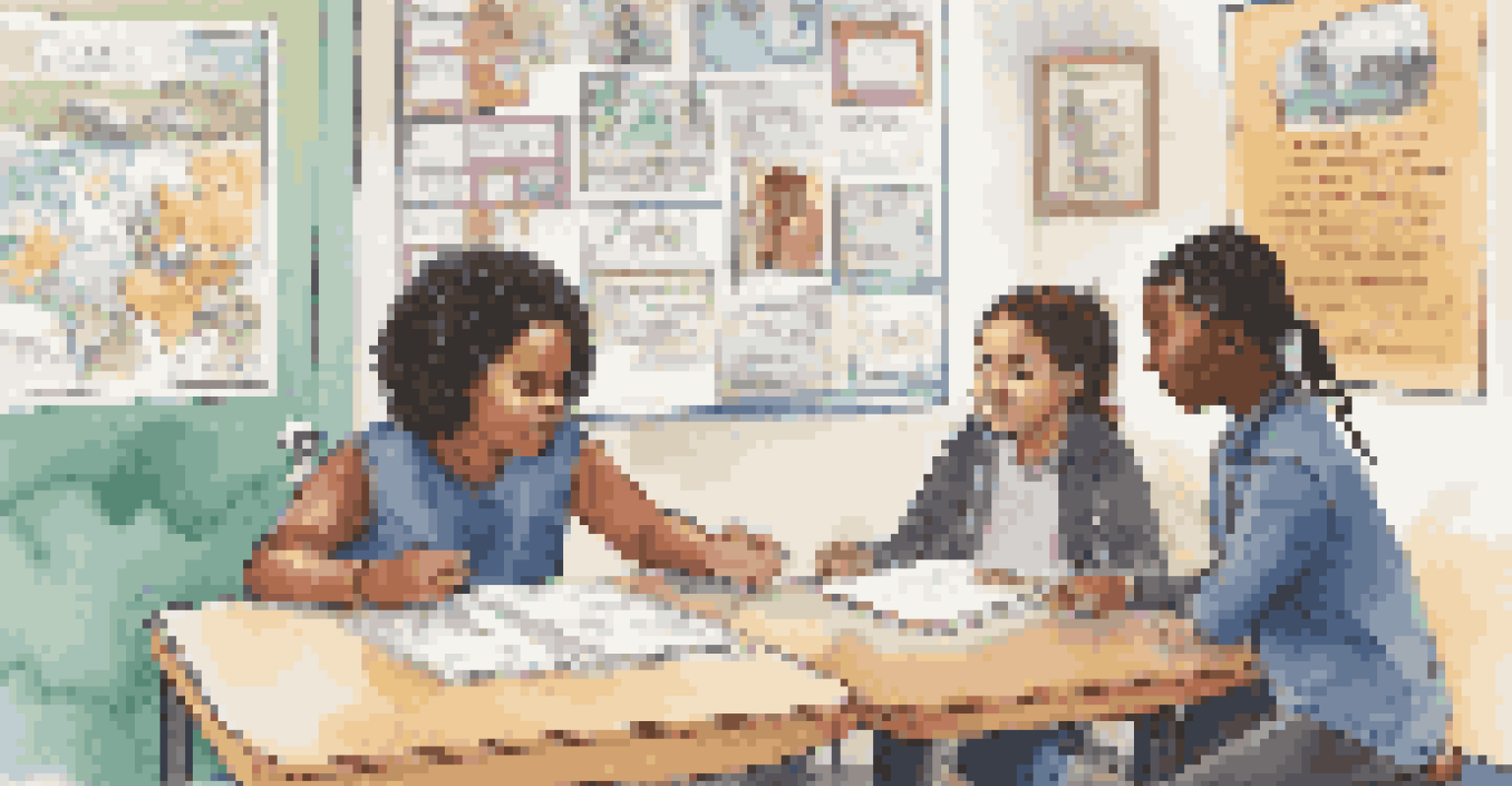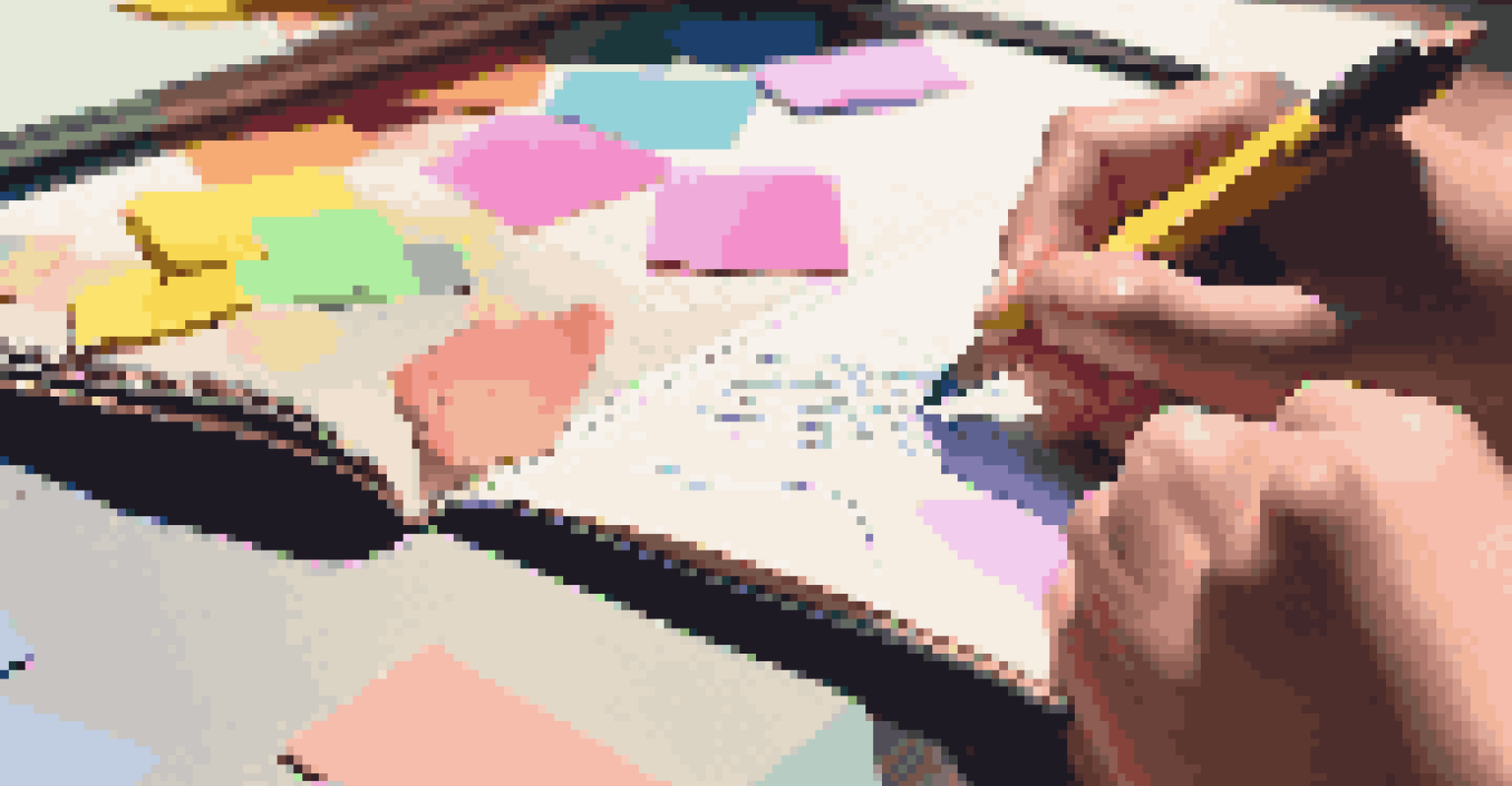Using Collaborative Learning to Teach Conflict Resolution Skills

Understanding Collaborative Learning and Its Benefits
Collaborative learning is an educational approach that encourages students to work together to solve problems and share knowledge. This method not only enhances academic performance but also builds essential social skills. When students collaborate, they learn to appreciate diverse perspectives, which is crucial in resolving conflicts.
Alone we can do so little; together we can do so much.
In a collaborative setting, learners engage in discussions, debates, and activities that promote teamwork. This interaction fosters a sense of community and belonging among students, making them more comfortable expressing their ideas and feelings. Ultimately, this supportive environment is key to developing effective conflict resolution skills.
Moreover, collaborative learning prepares students for real-world situations where teamwork and negotiation are vital. By engaging in group projects or peer discussions, learners practice navigating conflicts in a safe space before facing more significant challenges outside the classroom.
The Role of Communication in Conflict Resolution
Effective communication is at the heart of any successful conflict resolution strategy. In collaborative learning environments, students are encouraged to articulate their thoughts clearly and listen actively to others. This reciprocal exchange of ideas helps them develop empathy and understanding, which are essential for resolving disputes.

When students collaborate, they often encounter differing opinions, which can lead to conflicts. However, these moments become valuable learning opportunities. By practicing respectful dialogue and negotiation, students learn how to address disagreements constructively and find common ground with their peers.
Collaboration Builds Social Skills
Collaborative learning enhances academic performance while fostering essential social skills through teamwork and diverse perspectives.
Additionally, enhancing communication skills through collaboration empowers students to express their feelings and concerns openly. As they learn to navigate tough conversations, they build confidence in their ability to resolve conflicts, both in and out of the classroom.
Developing Critical Thinking Skills through Collaboration
Collaborative learning not only enhances communication but also hones critical thinking skills. When students work together to solve problems, they must analyze different viewpoints and assess the merits of various arguments. This process encourages them to think critically about the situation at hand.
The greatest danger in times of turbulence is not the turbulence; it is to act with yesterday's logic.
As students engage in discussions, they learn to question assumptions and consider alternative solutions. This critical evaluation is essential for effective conflict resolution, as it enables them to identify the root causes of disputes and develop appropriate strategies for resolution. By fostering this skill, collaborative learning equips students to tackle conflicts with a thoughtful approach.
Furthermore, critical thinking encourages students to reflect on their own biases and assumptions, leading to personal growth. This self-awareness is vital in conflict resolution, as it allows individuals to recognize their role in a disagreement and take responsibility for their actions.
Creating a Safe Environment for Conflict Resolution
For collaborative learning to be effective, it is crucial to create a safe environment where students feel comfortable expressing their thoughts and emotions. Teachers play a vital role in establishing this atmosphere by promoting respect and inclusivity. When students feel valued, they are more likely to engage in open dialogue and collaborate effectively.
In a safe learning environment, students are encouraged to take risks and voice their opinions without fear of judgment. This openness is essential for addressing conflicts, as it allows individuals to share their concerns and seek solutions collaboratively. Ultimately, a supportive atmosphere fosters trust and strengthens relationships among students.
Communication is Key to Resolution
Effective communication fosters empathy and understanding, helping students address conflicts constructively and find common ground.
Moreover, a safe environment helps students develop resilience when faced with conflicts. By learning to navigate disagreements in a constructive manner, they build the confidence to handle future challenges, both personally and professionally.
Incorporating Role-Playing to Teach Conflict Resolution
Role-playing is an effective tool in collaborative learning that allows students to practice conflict resolution skills in a controlled setting. By assuming different roles in a simulated conflict, students can explore various perspectives and develop empathy for others’ feelings. This experiential learning solidifies their understanding of conflict dynamics.
Through role-playing, students can experiment with different conflict resolution strategies, such as negotiation or compromise. These activities encourage creativity and critical thinking, as learners must adapt their approaches based on the scenario. By practicing in a safe environment, they become more adept at handling real-life conflicts.
Furthermore, role-playing fosters teamwork and collaboration, as students often work in pairs or small groups to navigate the scenarios. This cooperative effort not only enhances their conflict resolution skills but also reinforces the importance of working together to find solutions.
Encouraging Reflection and Feedback in Collaborative Learning
Reflection is a crucial component of collaborative learning, especially when it comes to conflict resolution. After participating in group activities or discussions, students should be encouraged to reflect on their experiences. This practice helps them identify what worked well and what could be improved in their approach to resolving conflicts.
Feedback plays a significant role in this reflective process. By providing constructive feedback to one another, students can gain insights into their strengths and areas for growth. This exchange of feedback fosters a culture of continuous improvement, empowering learners to refine their conflict resolution skills over time.
Reflection Enhances Learning Growth
Encouraging reflection and feedback in collaborative activities empowers students to continuously improve their conflict resolution skills.
Moreover, reflection and feedback not only enhance individual skills but also strengthen group dynamics. As students learn from each other, they become more effective collaborators, better equipped to tackle conflicts together in the future.
Measuring the Impact of Collaborative Learning on Conflict Resolution
To fully understand the effectiveness of collaborative learning in teaching conflict resolution skills, it is essential to measure its impact. Educators can utilize various assessment methods, such as surveys, observations, and peer evaluations, to gauge students' progress. These tools provide valuable insights into how well students are developing their conflict resolution abilities.
Additionally, tracking changes in students’ behavior and attitudes towards conflict can help educators refine their teaching strategies. For instance, if students demonstrate improved communication and problem-solving skills, it indicates that collaborative learning practices are effective. Conversely, identifying areas where students struggle can guide further instruction.

Ultimately, measuring the impact of collaborative learning fosters accountability and continuous improvement in teaching methods. By evaluating outcomes, educators can ensure that they are effectively equipping students with the essential conflict resolution skills needed for their future.